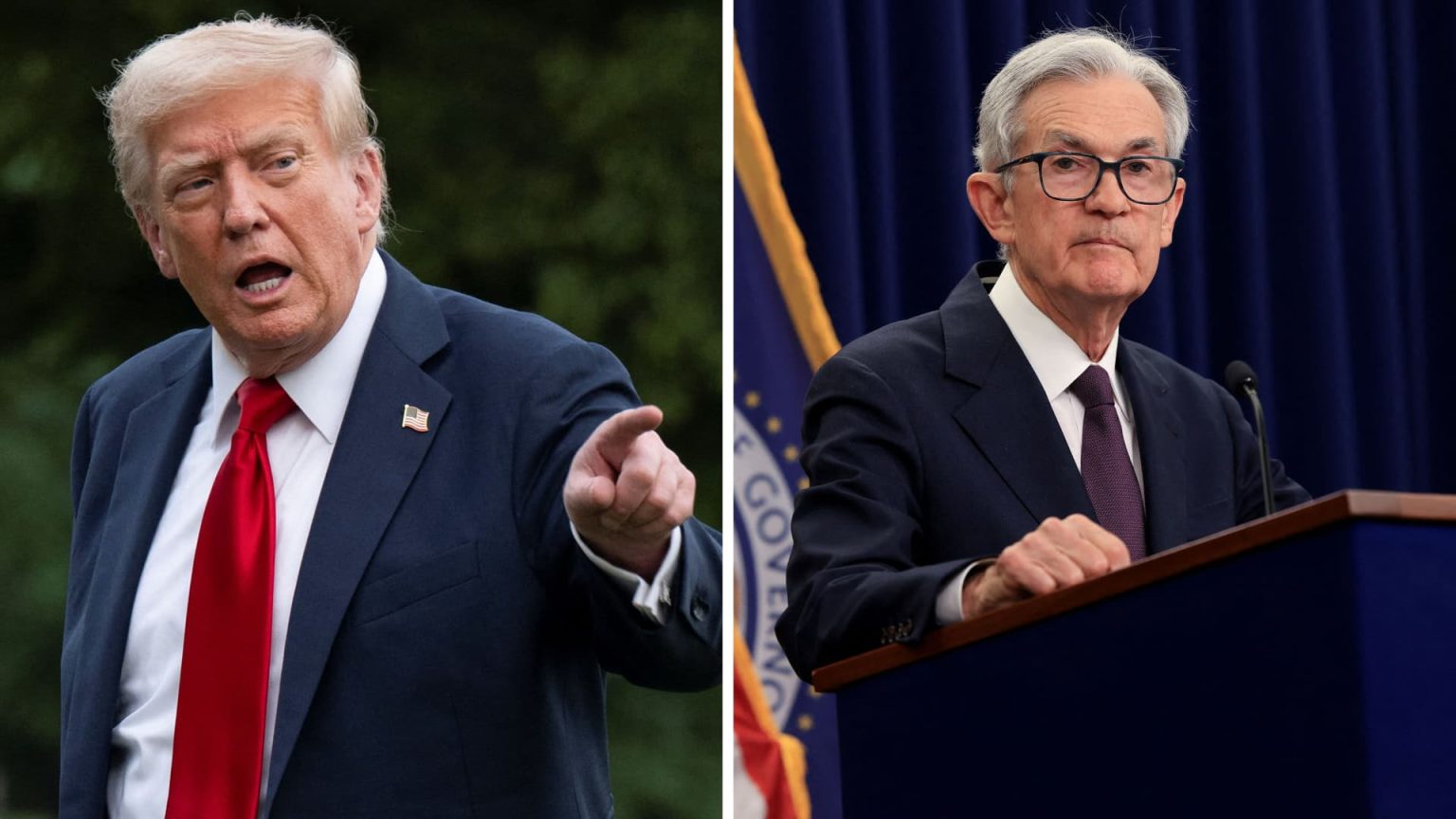In a rapidly developing situation regarding U.S. monetary policy, President Donald Trump initially suggested he might fire Federal Reserve Chair Jerome Powell, a move that has stirred significant debate among lawmakers. However, just hours later, Trump downplayed these intentions, marking yet another chapter in a contentious relationship that has spanned his presidency. This article explores the implications of these events, the political landscape surrounding the Federal Reserve, and the reactions from both sides of the aisle.
| Article Subheadings |
|---|
| 1) Tension in the Oval Office |
| 2) The Legal Framework |
| 3) Political Reactions |
| 4) Financial Market Reactions |
| 5) The Future of the Federal Reserve |
Tension in the Oval Office
The recent discussions within the Oval Office sparked significant speculation regarding President Trump’s views on the Federal Reserve and its leadership. During a meeting with House Republicans, Trump posed a question about firing Jerome Powell, which elicited support from several attendees. According to a senior White House official, Trump indicated he would consider moving forward with firing Powell after receiving feedback from the lawmakers. While the president made headlines with these remarks, he soon attempted to clarify his stance by claiming, “We’re not planning on doing it,” thus creating a confusing narrative.
The Legal Framework
The firing of a Federal Reserve Chair is unprecedented in American history, as no sitting president has attempted to do so. The relationship between the White House and the central bank is designed to preserve autonomy, ensuring that monetary policy is not swayed by political pressures. Powell himself stated previously that his removal is “not permitted under the law.” Furthermore, a recent Supreme Court ruling reinforced the idea that the president does not have unilateral authority to remove Fed officials without just cause, complicating the President’s potential plans.
Political Reactions
Political responses have poured in from both the Republican and Democratic parties, each echoing their concerns regarding Trump’s volatile stance on Powell. Lawmakers such as Representative French Hill expressed skepticism about the feasibility of firing Powell, suggesting it was unlikely. Conversely, Representative Anna Paulina Luna of Florida fueled speculation on social media by proclaiming, “Hearing Jerome Powell is getting fired! From a very serious source,” indicating a fracture within the Republican narrative concerning Powell’s leadership. Trump’s ongoing critiques of Powell, which did not begin with this administration, point to deeper ideological rifts regarding monetary policy.
Financial Market Reactions
The financial markets responded intriguingly to Trump’s initial suggestion of firing Powell, with stock prices dipping before rebounding once he denied such intentions. Investors are acutely aware that any instability regarding the Federal Reserve’s leadership could have long-lasting impacts on monetary policy, specifically concerning interest rates. Under Powell, the Fed has carefully navigated lowering rates, which has become a contentious issue for Trump, who wishes for more aggressive cuts. Thus, the Fed’s role in ensuring economic stability is critical, leading to market hesitations whenever the leadership is called into question.
The Future of the Federal Reserve
Looking ahead, the uncertainty surrounding Powell’s position raises critical questions about the future of the Federal Reserve. Since he was first nominated by Trump in 2018, Powell’s term has been characterized by tensions involving fiscal policy and party lines. With the current target interest rate hovering between 4.25% and 4.5%, Trump has openly suggested he would favor lowering rates by as much as 3 percentage points. However, the internal dynamics within the Fed remain pivotal, as other governors appointed by Trump have exhibited a more cautious approach regarding rate adjustments. Thus, the landscape is notably intricate as political ambitions intersect with economic policy, creating potential volatility in the months to come.
| No. | Key Points |
|---|---|
| 1 | President Trump initially considered firing Jerome Powell but later denied any such plans. |
| 2 | Firing a Federal Reserve Chair has never been attempted by a president in U.S. history. |
| 3 | Political reactions indicate a divide within the Republican Party regarding Powell’s future. |
| 4 | Financial markets showed volatility in response to Trump’s comments about Powell. |
| 5 | The future trajectory of Fed policy remains uncertain due to tensions between Trump and Powell. |
Summary
The dynamics surrounding Federal Reserve Chair Jerome Powell’s future continue to reflect a broader narrative of political influence in U.S. monetary policy. Trump’s fluctuating rhetoric raises questions about the interplay between political ambitions and economic stability. As lawmakers and financial markets respond, the implications for both the Fed and the broader economy warrant careful analysis moving forward.
Frequently Asked Questions
Question: How has Trump’s administration historically interacted with the Federal Reserve?
Trump’s administration has openly critiqued the Fed under Powell, particularly regarding interest rate policies, suggesting that monetary policy should align more closely with the administration’s economic agenda.
Question: What are the implications of firing a Federal Reserve Chair?
Firing a Federal Reserve Chair could signal significant political interference in monetary policy, impacting market confidence and potentially destabilizing the economy.
Question: Why are some lawmakers supportive of firing Powell?
Some lawmakers believe that the Fed under Powell has not been aggressive enough in lowering interest rates, leading to calls for leadership change to pursue a more favorable monetary policy.


